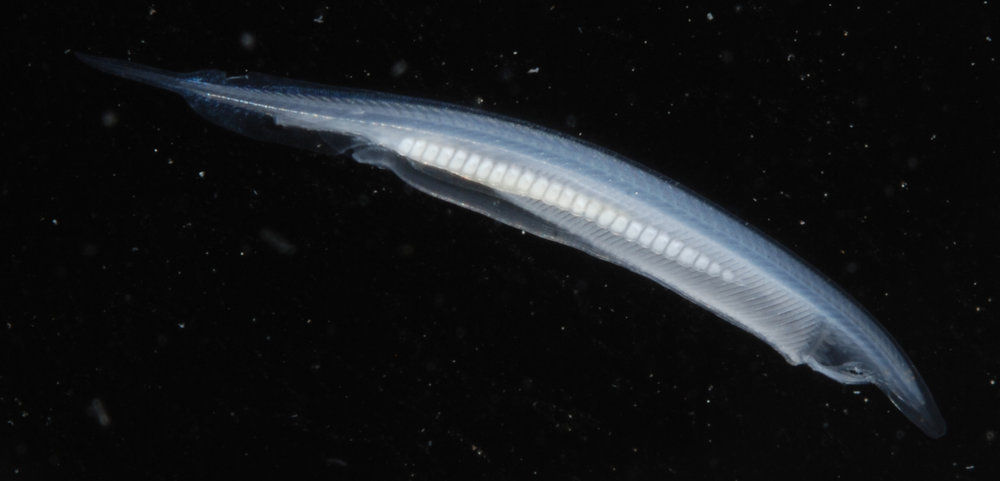
CHORDATA
Cephalochordata
[© Moorea Biocode]
Chapter Outline

Links to external sites will appear in pop-up windows.
"Cephalochordata are also known as amphioxus and lancelets. The group contains only about 20 species of sand-burrowing marine creatures. The Cambrian fossils Yunnanozoon and Pikaia are likely related to modern cephalochordates.
Among the living chordates there is little doubt that lancelets are most closely related to the Craniates based on synapomorphies such as segmented axial muscles and metameric organization of the visceral (pharyngeal) arches. Uniquely, the notochord of cephalochordates extends to the tip of the snout, the gonads are segmentally organized, adults have a high number (50+) gill arches, and there is a hood-like atrium covering the pharyngeal region. The Early Cambrian fossil Yunnanozoon possesses the extended notochord and segmental gonads, but lack the atrium and increased number of gill arches." [Chordata. John G. Lundberg. The Tree of Life Web Project. http://tolweb.org/tree?group=Chordata&contgroup=Deuterostomia. 1995.]
All lancelets are in a single family, Branchiostomidae. As of 2024, 3 species of Cephalochordata have been observed in iNaturalist in the US and 9 throughout the world.
Organisms:
- Florida Lancelet (Branchiostoma floridae) - three iNat observations in the US
- Virginia Lancelet (Branchiostoma virginiae) - three iNat observations in the US
Resources:
|
| [ Previous Page ] | [ Next Page ] |